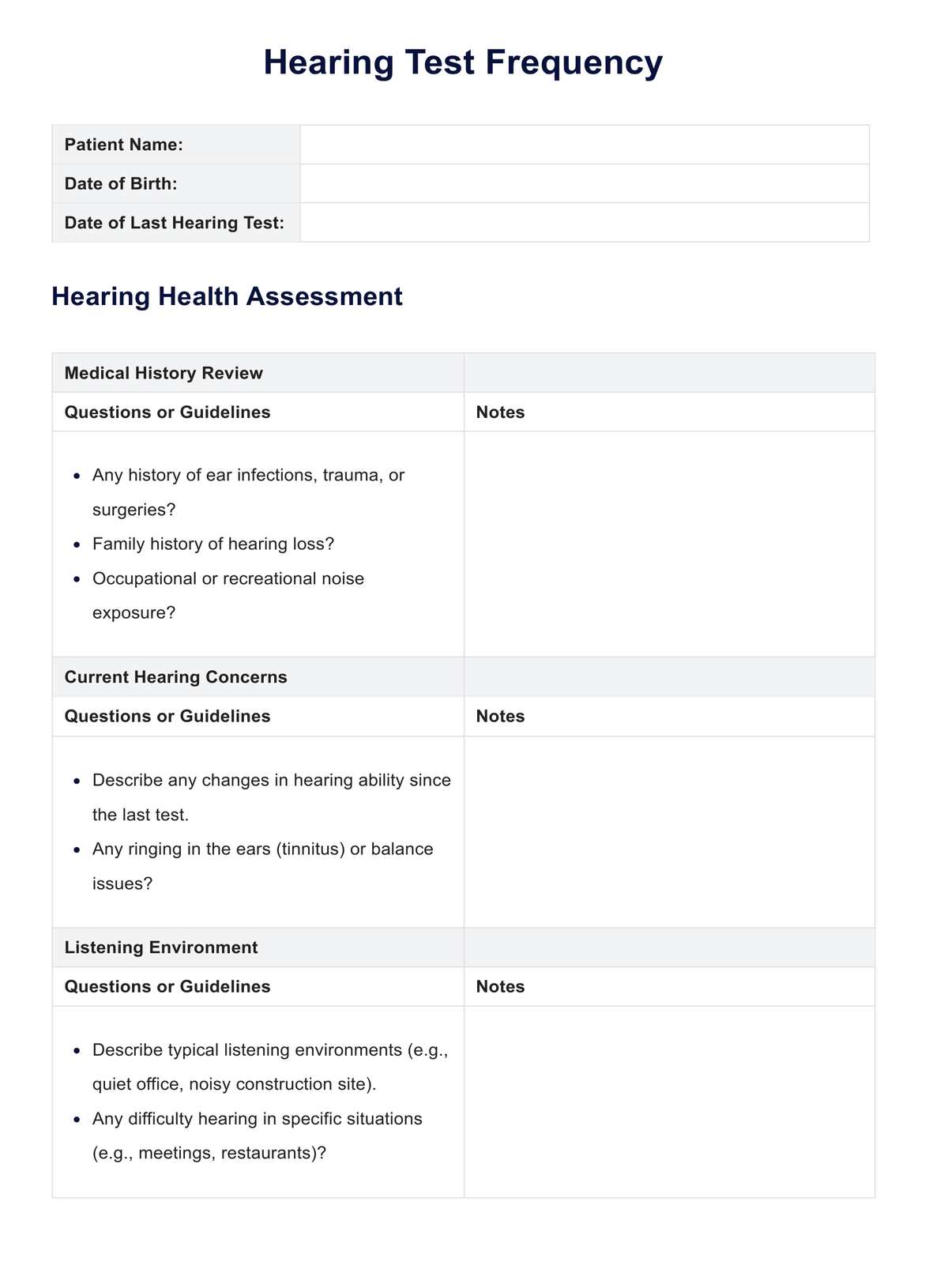Hearing tests assess a range of frequencies, typically from low frequency of 250 Hz to 8000 Hz, covering the audible spectrum for humans.

Hearing Test Frequency
Prioritize your hearing health today! Download our free Hearing Test Frequency example for personalized recommendations on monitoring your auditory well-being.
Use Template
Hearing Test Frequency Template
Commonly asked questions
It's recommended to have a baseline hearing test by age 50, then every 3-5 years after that unless specific concerns arise.
Hearing sensitivity varies, but most deaf people can hear frequencies from 20 Hz to 20,000 Hz when they're young. However, this range often decreases with age.
EHR and practice management software
Get started for free
*No credit card required
Free
$0/usd
Unlimited clients
Telehealth
1GB of storage
Client portal text
Automated billing and online payments











